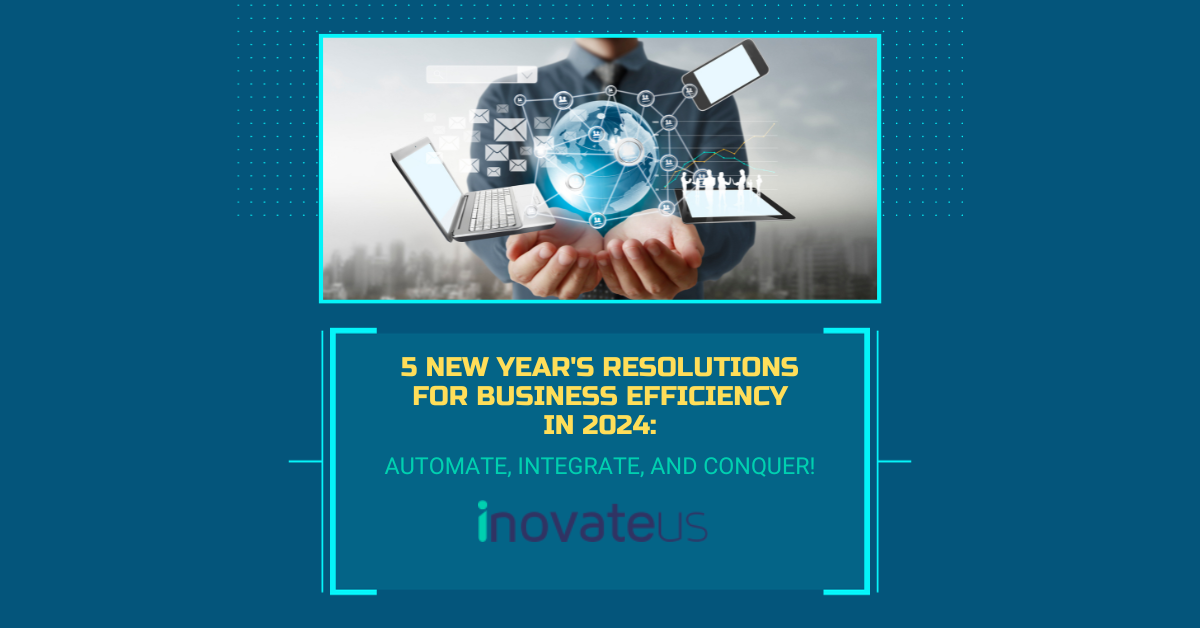More and more CIOs are turning to an emerging technology practice called robotic process automation (RPA) to streamline business operations and lower costs. With RPA, organizations can automate mundane rules-based business processes, allowing business users to spend more time serving customers or other higher-value work. Others see RPA as an interim solution on the path to intelligent automation (AI) through machine learning (ML) and artificial intelligence (AI) tools, which can be trained to make judgments about the results.
Here, we look at what robotic process automation really is and how we can make the most of RPA based on business goals.
What is robotic process automation?
RPA is a technology application, governed by business logic and structured inputs, which then aims to automate business processes.
With RPA tools, a business can configure software or a “bot” to capture and interpret applications to
- process a transaction,
- manipulate data,
- trigger responses,
- and communicate with other digital systems.
RPA scenarios range from something as simple as generating an automatic reply to an email to implementing thousands of bots.
COOs working for financial services companies were at the forefront of RPA adoption, finding ways to use software to facilitate business processes without increasing staffing or costs, says Regina Viadro, vice president of EPAM Systems and advisor to the company’s artificial intelligence practice.
Viadro has worked on RPA engagements for clients in
- financial services,
- healthcare,
- retail, and
- human resources.
This shows the scope of use of RPA today.
What are the benefits of RPA?

RPA offers organizations the opportunity to reduce personnel costs and human error. David Schatsky, Managing Director of Deloitte LP, highlights a bank’s experience in implementing RPA. The bank redesigned its complaints process by implementing 85 bots to run 13 processes, handling 1.5 million requests per year. The bank added capacity equal to more than 200 full-time employees at about 30 percent of the cost of hiring more staff, Schatsky said.
Bots are generally inexpensive and easy to implement, requiring neither custom software nor deep systems integration. Schatsky says such characteristics are crucial as organizations continue to grow now without adding significant expense or friction between workers. “Companies try to have a leeway to better serve their businesses by automating low-value-added tasks,” says Schatsky.
Companies can also boost their automation efforts by using cognitive technologies.
These include
- machine learning,
- speech recognition,
- natural language processing into RPA,
- automating higher-order tasks.
Such RPA implementations, in which up to 15-20 steps can be automated, are part of a value chain known as intelligent automation (AI), Viadro explains. “If we segment all the big companies and ask them what their agenda is for 2018, almost 100% would say smart automation,” Viadro says.
By 2020, automation and artificial intelligence will reduce employee needs in enterprise shared service centers by 65%, according to Gartner, which says the RPA market will exceed $ 1 billion in 2020. By then, 40% of large companies will use an RPA software tool, compared to less than 10% today.
What are the pitfalls of RPA?
RPA is not for all companies. RPA can kill jobs. It poses challenges for CIOs when it comes to talent management. As companies using RPA attempt to transfer large numbers of workers to new jobs, Forrester Research estimates that RPA software will threaten the livelihoods of 230 million or more knowledge workers or about 9% of the population labor force.
“Various robotics programs have been discontinued or CIOs have categorically refused to install new bots,” said Alex Edlich and Vik Sohoni, senior partners at McKinsey & Company, in a May 2017 report.
Installing thousands of bots took much longer. This is more complex and expensive than most organizations expected, Edlich and Sohoni say. The platforms that bots interact on often change and the necessary flexibility is not always configured in the bot. Additionally, new regulations that require minor changes to an application form could waste months of administrative work on a bot that is about to be completed.
A recent Deloitte UK study came to a similar conclusion. “Only three percent of organizations have successfully brought RPA to a level of 50 robots or more,” said Justin Watson, David Wright, and Marina Gordeeva, authors at Deloitte UK.
Furthermore, the economic results of the implementation of RPA are far from assured. While it is possible to automate 30% of tasks for most professions, that does not clearly translate into a 30% cost reduction.
What companies are using RPA?

Walmart, Deutsche Bank, AT&T, Vanguard, Ernst & Young, Walgreens, Anthem, and American Express Global Business Travel are among the many companies that adopt RPA.
Walmart IT Director Clay Johnson says the retail giant has deployed around 500 bots to automate everything from answering employee questions to retrieving useful information from audit documents. “A lot of them were from people tired of work,” Johnson said.
David Thompson, CIO of American Express Global Business Travel, uses RPA to automate the process of canceling an airline ticket and issuing a refund. Thompson is also looking to use RPA to facilitate automatic reservation change recommendations when the airport closes and to automate certain expense management tasks.
“We took RPA and trained it on how employees perform these tasks,” says Thompson, who implemented a similar solution in his previous role as CIO at Western Union. “The list of things that we could automate is getting longer.”
10 tips for effective robotic process automation
1. Define and manage expectations
Quick wins are possible with RPA, but pushing RPA to scale is a different animal. Dave Kuder, director of Deloitte Consulting LLP, says that many RPA setbacks are due to mismanagement of expectations. Bold claims about RPA from vendors and implementation consultants haven’t helped. That’s why it’s crucial that CIOs adopt a cautiously optimistic mindset. “If you go in with your eyes open, you will be much happier with the result,” says Kuder.
2. Consider the business impact
RPA is often presented as a mechanism to increase ROI or reduce costs. But Kris Fitzgerald, CTO at NTT Data Services, says more CIOs should use it to improve the customer experience. For example, companies like airlines employ thousands of customer service agents. Customers are still waiting in line for their call to be answered. A chatbot could help alleviate some of these expectations. “You put this virtual agent in there and there is no downtime, no sickness, and no bad attitude,” says Fitzgerald. “The customer experience is the flag to attack. ”
3. Involve the IT department early and often
COOs initially bought RPA and hit a wall during implementation. This prompted them to seek help (and forgiveness) from IT, Viadro says. Now, “citizen developers” without technical expertise are using cloud software to implement RPA directly into their business units. Oftentimes, the CIO tends to step in and block them. Business leaders need to get IT involved early on to make sure they get the resources they need.
4. Bad design, change management can take their toll
Some companies neglect communication exchanges between different bots, which can break a business process. “Before implementing, you need to think about the design of the operating model,” says Srivastava. “You have to define how you expect the different robots to work together. Meanwhile, some CIOs will neglect to negotiate the changes that new operations will have in an organization’s business processes. CIOs need to plan for this well in advance to avoid business disruption.
5. Don’t fall into the data trap
A bank that deploys thousands of bots to do data entry or check software operations generates a ton of data. This can lure CIOs and their peers into an unfortunate scenario in which they seek to leverage data. Srivastava says that it is not uncommon for companies to run ML on the data generated by their bots and then start a chatbot upfront to make it easier for users to query the data. Afterward, the RPA project became an ML project that was not properly defined as an ML project. “The puck keeps moving” and CIOs are having a hard time catching it, Srivastava said. He recommends that CIOs view RPA as a long-term arc instead of piecemeal projects evolving into something heavy.
6. The governance of the project is essential
Another problem that appears in robotic process automation is the lack of planning of some obstacles. An employee of a Genpact customer changed the company’s password policy. However, no one programmed the bots to adapt. This led to data loss. You can’t just release them and let them go; you need command and control.
7. Control maintains compliance
There are many governance challenges. They deal with using a single bot in an environment, let alone thousands. A Deloitte client spent several meetings trying to find out whether their bot was male or female. This is a valid gender issue. It must consider human resources, ethics, and other compliance areas for the business, says Kuder.
8. Build an RPA Center of Excellence
The most successful RPA implementations include a center of excellence. The people are responsible for making efficiency programs successful within the organization. However, not all companies have the budget for it. The RPA Center of Excellence
- creates business cases
- calculates potential cost optimization and ROI,
- and measures progress against those goals.
9. Don’t forget the impact on people
Some organizations focus on implementation a lot. However, they forget to spend time on human resources. This can create nightmare scenarios for employees who see their daily workflows and processes disrupted. We forget that people come first.
10. Integrate RPA throughout your development cycle
CIOs have to automate the entire development lifecycle. Otherwise, they can kill their bots during a big launch. It sounds easy to remember, but people don’t make it part of their process.
Ultimately, there is no silver bullet for implementing RPA. It requires an ethic of smart automation that should be part of the long-term journey of companies.











